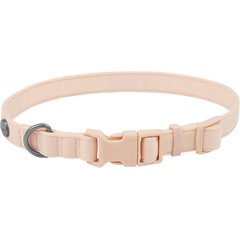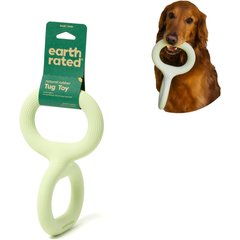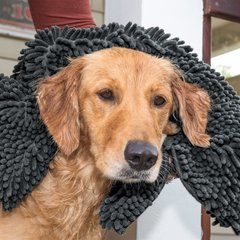Why Do Dogs Get the Zoomies?
Adobe Stock/Mary Swift
Many pet parents aren’t sure what to make of a puppy’s nonstop dash around the house the first time it happens. The “zoomies” seem to come out of nowhere—one minute your dog is just hanging out, and the next she’s sprinting like she’s in a track and field competition.
And then there’s the vocalization that occasionally goes with it as well. Does the growling and barking as she runs mean that your best friend is having a reactive episode? Does this inexplicable activity surge mean something’s wrong?
Let’s look at this goofy but very normal dog behavior, and why pups do it.
What Causes Dog Zoomies?
So, what exactly are the dog zoomies, or frenetic random activity periods (FRAPs)? In most dogs, it’s a sudden burst of activity that usually includes running in big circles around the house, usually in a hunched position for maximum speed.
Sometimes the dog zoomies also include a few spins and play bows, which is when a dog has their elbows down and their butt up (the universal canine invitation to play!).
The exact cause of dog zoomies isn’t fully understood, but the assumption is that they’re a quick way for dogs to release pent-up, excess energy, excitement, or even stress and nervous energy.
Zoomies typically occur most frequently in puppies, but even adult and senior dogs can enjoy a zoomie dash, particularly after a bath.
Video: simonkr/Creatas Video/Getty Images Plus
Why Do Dogs Get the Zoomies?
There are several reasons why dog zoomies happen, from extreme happiness to stress.
The most common reasons dogs get zoomies include:
-
Age: There’s a lot going on in puppyland as your dog matures, and all of that growth and change can trigger arousal. Much like children, puppies have a seemingly bottomless well of energy, and zoomies are just one of the ways they can attempt to drain it. That said, dog zoomies aren’t just for puppies! Many older dogs continue to enjoy this silly racing behavior well into adulthood and beyond.
-
Excitement: Moments of high arousal, like spotting the leash as you get ready for a walk, or when you arrive home at the end of the day can trigger a FRAP. Dashing around the house can help to vent a dog’s remaining happy energy before settling down (or not!).
-
Playfulness: Sometimes a game of fetch is just too fun, and your pup can’t contain her joy. Or maybe you want to wrap up a game of tug-of-war, and your dog wants the good times to keep going. Enter the zoomie, your pup’s attempt to stay in the play zone.
-
The 5 p.m. dash: Dogs are temporal creatures, which means that the passage of time has a primal impact on them. Many dogs have a “witching hour” between 5–8 p.m., which can coincide with mealtime, your arrival home from work, or even an early bedtime for very young pups. This final burst of energy might signal the beginning of a wind-down period.
-
Post-grooming: Dogs rarely enjoy bath time. Between the discomfort of the water, soap, and handling required to get the grime off, enduring a bath requires more patience than many dogs have. By the time it’s over, they’re relieved to get to shake off the water and the stress. Couple the odd sensation of having wet fur with the new perfume from the shampoo, and you have the perfect recipe for a roly-poly zoomie!
-
Keep-away: In a competition between two legs and four, our dogs always have the advantage. For example, if you’re trying to bring your dog inside from the yard before they’re ready, or they grabbed a tea towel and you’re trying to get it back, there’s a good chance you’ll be dealing with a case of the zoomies.
-
Stress, tension, frustration, overtiredness: Unfortunately, dog zoomies aren’t always about fun. Sometimes dashing around is a way to release pent-up negativity related to stress, like waiting to go into the exam room at the vet office or the punchiness of being an overtired puppy and not understanding that it’s time for a nap.
-
Lack of exercise: Related to frustration-based zoomies, some dogs’ zoomies are a product of having too much energy with no outlet. All dogs—but especially puppies—need plenty of time to exercise both their bodies and their brains. When they don’t get enough of both, the result can be an uptick in zoomies, often paired with less desirable behaviors like nipping and vocalization.
Recommended Products
How To Keep Your Dog Safe During Zoomies
While dog zoomies are typically all in good fun, accidents can happen when pups go into overdrive.
Keeping both ends of the leash safe during a FRAP is important, so consider the following when dealing with zoomies:
- Outdoor safety: If your dog goes into full turbo mode when outside, keep your play sessions contained to a fenced-in area, or use a long leash to keep your dog near. Make sure they are wearing a well-fitting, top-rated dog collar with ID tag in case they do escape.
- Flooring: Puppies who predictably go into the zoom-zone need traction. If your home has slick floors, consider putting down a few throw rugs to avoid injuries from spinouts until your pup grows out of the phase.
- Tippy tables: Puppy zoomies don’t always follow a safe path, which means your dog might go careening into your furniture. Consider relocating breakables, like vases or artwork, that might tip over from coffee tables or side tables when your dog gets rambunctious.
- Watch for the bystanders: Little folks and elders alike can be swept off their feet during dog zoomies. Either relocate vulnerable folks to a safe space during rush hour, or move your dog to an open area, like a dog park, when they need to race.
Recommended Products
Dog Zoomies FAQs
Are zoomies a sign of a happy dog?
Typically, yes, dog zoomies are an expression of joy and fun.
That said, some zoomies are an indicator of stress, fear, or frustration, so consider your dog’s body language just prior to and during the session, as well as the timing of it.
For example, is your pup zooming when you pull out the nail clippers? Then it’s probably a stress reaction.
Why do dogs get zoomies after a bath?
There’s something about the weirdness of the bathing process and the unfamiliar (and probably unpleasant) sensation of having wet, newly scented fur that sends most dogs to the zoom-zone.
Post-bath zoomies are likely an attempt to dry off and reintroduce more familiar odors to their fur.
Why do dogs get zoomies at night?
Dogs tend to be more active in the twilight hours. Plus, the afternoon-into-evening time frame coincides with other exciting possibilities, like mealtime, people arriving home, and pre-sleep play.
So, their genetic programming plus environmental triggers create a perfect storm for evening FRAPs!
Why do dogs get the zoomies after pooping?
It’s safe to assume that there’s a feeling of relief after, ahem, cleaning out the pipes; so it’s not a surprise that many dogs go for a joyful romp once they’ve completed the task.



